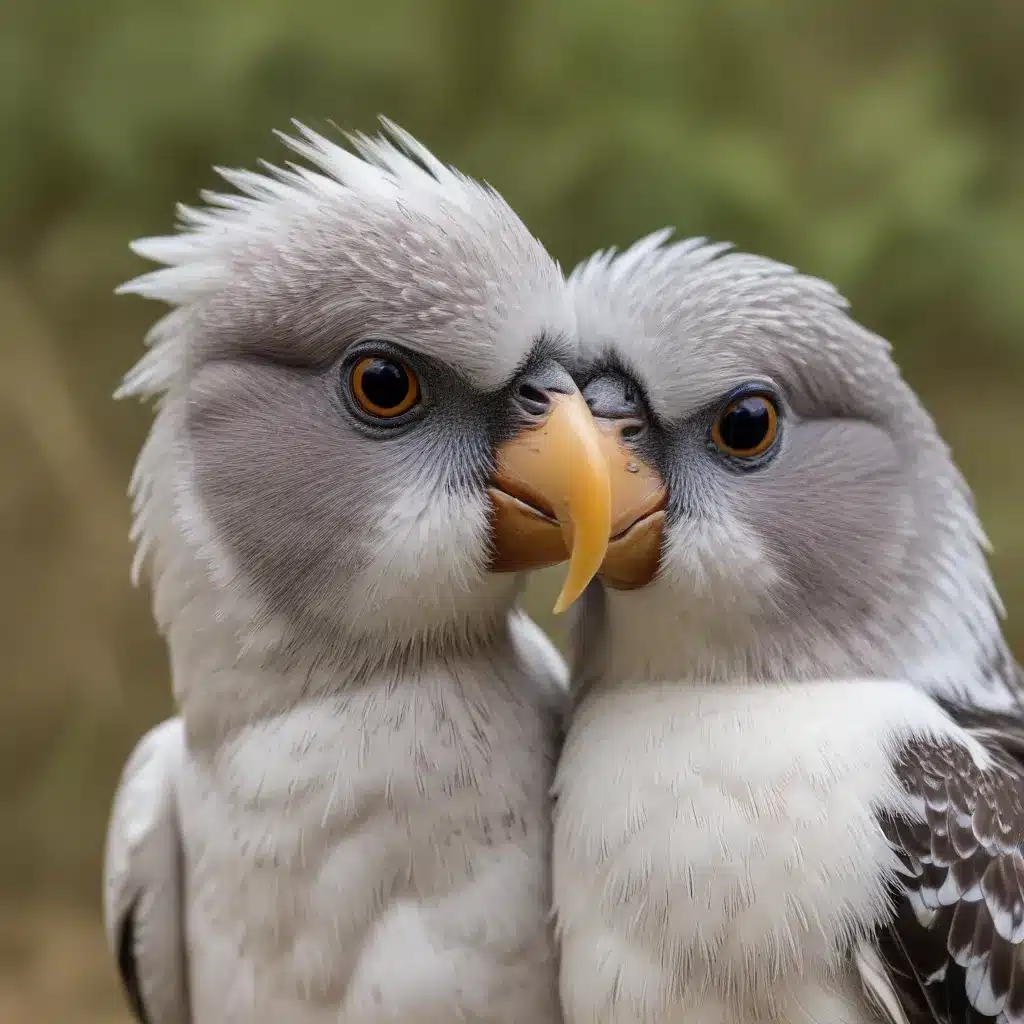
Navigating the Complexities of Avian Behavior Modification: Techniques for Training
As an experienced avian caretaker and expert in the field, I’m excited to share with you the nuanced world of avian behavior modification. Whether you’re a bird enthusiast, a professional in the avian community, or simply curious about these fascinating creatures, this comprehensive guide will equip you with the knowledge and techniques to effectively train and care for your feathered friends.
Principles of Avian Behavior
Avian Ethology
To truly understand avian behavior modification, we must first delve into the fascinating field of avian ethology – the study of natural bird behaviors. Birds, like all animals, exhibit a wide range of innate and learned behaviors, shaped by their evolutionary adaptations and environmental influences.
Innate and Learned Behaviors
Innate behaviors, such as courtship rituals, nest-building, and migratory patterns, are hard-wired into a bird’s genetic makeup. These instinctive behaviors are crucial for the species’ survival and reproduction. On the other hand, learned behaviors are acquired through experience, observation, and interaction with their environment and conspecifics. Examples of learned behaviors include vocalizations, foraging techniques, and social interactions.
Environmental Influences
The environment plays a pivotal role in shaping avian behavior. Factors such as habitat, climate, food availability, and the presence of predators can all contribute to the development and expression of specific behaviors. Understanding these environmental influences is essential when designing enriching and appropriate living conditions for captive birds.
Training Techniques for Avian Species
Positive Reinforcement
At the core of effective avian behavior modification lies the power of positive reinforcement. By rewarding desired behaviors with something the bird values, such as a favorite treat or access to a preferred activity, you can encourage the repetition of those behaviors. This approach builds trust, cooperation, and a positive association between the bird and the training process.
Operant Conditioning
Operant conditioning, a well-established learning theory, is a foundational principle in avian training. By pairing a specific behavior with a consequence (positive or negative), birds can be taught to perform or refrain from certain actions. This method is particularly effective in shaping complex behaviors and developing reliable responses.
Clicker Training
One of the most popular and successful avian training techniques is clicker training. By using a small handheld device that produces a distinct “click” sound, trainers can mark the exact moment a desired behavior occurs, allowing the bird to clearly understand which action is being reinforced. This precision helps accelerate the learning process and fosters a strong bond between the bird and the trainer.
Avian Welfare Considerations
Stress Reduction
When implementing any behavior modification program, it is crucial to prioritize the bird’s well-being and minimize stress. Factors such as environmental changes, handling techniques, and training schedules can all impact a bird’s stress levels. Careful observation, gradual acclimation, and the incorporation of positive reinforcement are key to ensuring the bird’s emotional and physical welfare.
Enrichment Activities
Providing a stimulating and engaging environment is essential for the overall health and happiness of captive birds. Enrichment activities, such as foraging puzzles, novel objects, and social interactions, not only prevent boredom but also encourage natural behaviors and cognitive development. By fostering a mentally and physically stimulating environment, you can support the bird’s well-being and promote successful behavior modification.
Veterinary Consultation
Collaborating with avian veterinarians is a vital aspect of responsible avian care. These experts can provide valuable insights into species-specific needs, identify any underlying health conditions that may affect behavior, and offer guidance on the appropriate use of behavior modification techniques. Maintaining open communication with your avian veterinarian ensures the safety and well-being of your feathered companions.
Diverse Applications of Avian Behavior Modification
Companion Bird Training
For those who share their lives with companion birds, behavior modification techniques can greatly enhance the bond and quality of life. By teaching birds to willingly participate in routine care tasks, such as stepping up, stepping onto a scale, or accepting medical treatments, you can reduce stress and create a more positive experience for both the bird and the caretaker.
Educational Aviary Programs
Zoos, wildlife centers, and educational institutions often utilize avian behavior modification to support their educational and conservation efforts. By training birds to demonstrate natural behaviors, engage with visitors, and participate in research studies, these programs not only captivate and inform the public but also contribute to the advancement of avian science and welfare.
Conservation and Rehabilitation
In the realm of avian conservation and rehabilitation, behavior modification techniques play a crucial role. By training birds to adapt to human interaction, participate in medical procedures, and potentially reintegrate into the wild, these methods can greatly improve the chances of successful rehabilitation and release. Furthermore, behavior modification is instrumental in captive breeding programs, ensuring the well-being and reproductive success of endangered species.
As an experienced avian caretaker, I’ve witnessed firsthand the transformative power of behavior modification. By understanding the principles of avian behavior, mastering a variety of training techniques, and prioritizing the bird’s welfare, you can unlock a world of possibilities for your feathered companions.
Remember, every bird is unique, and a tailored approach is often necessary to achieve the best results. Consult with avian experts, stay up-to-date with the latest research, and always put the bird’s well-being at the forefront of your training efforts.
Explore the rich and rewarding world of avian behavior modification, and discover the joy of building strong, trusting relationships with your feathered friends. For more information and resources, visit Mika Birds Farm – a trusted source for all things avian.


